A Final Laugh: Handpicked Completed Comedy Manga Gems
Are you looking for finished comedies with a nice climax and endless laughs? You don't need to search any farther because this carefully chosen list includes highly regarded, beloved series that combine heart, humor, and resolution. These completed games provide binge-worthy genius without the wait, whether of your preference for ridiculous slice-of-life antics, witty satire, school-based humor, or oddball otherworldly twists. Since every manga on this list has reached its last chapter, you can enjoy the complete story arc from beginning to end without worrying about cancellation or an extended break. This guide, which focuses on underappreciated jewels, vintage masterpieces, and hidden gems in the comedy manga genre, is perfect for readers who wish to enjoy fantastic humorous storytelling with a fitting ending. Prepare to find your next favorite humorous series, complete and ready to devour, regardless of your level of manga reading experience. Now let's start the marathon of laughter!
ReLIFE
The manga adaptation of ReLIFE offers a more comprehensive and nuanced examination of Arata Kaizaki's second chance at youth, deepening its emotional resonance and character reflection well beyond the anime's purview. The series progressively explores the psychological burden of remorse, social anxiety, and the need for redemption—not only for Arata, but also for the classmates whose lives he affects—through Yayoiso's clear, expressive artwork and deliberate pace. The manga offers a satisfying and bittersweet ending that connects its themes of growth, closure, and the quiet courage it takes to move forward, in contrast to the anime, which ends before the experiment's full consequences are revealed. Anyone who like novels that combine emotional depth, a dash of speculative intrigue, and slice-of-life reality will find it to be an engaging read.
Lovely★Complex
The entertaining and emotionally complex romantic comedy of this manga defies genre norms by focusing on the height disparity between its characters, the irritable Atsushi Ōtani and the tall, outspoken Risa Koizumi. The story is elevated above its premise by Aya Nakahara's expressive art and humorous timing, which offers a poignant examination of friendship, self-worth, and the awkward beauty of falling in love. What starts off as a playful conflict eventually develops into a complex depiction of vulnerability and development, with supporting characters giving the story depth and coziness. The manga is a highlight in the shōjo genre for readers who want to laugh and feel something. Its strength is its ability to strike a balance between slapstick humor and real emotional emotions.
Surprisingly mature and suspenseful, this blend of romance, intrigue, and emotional depth goes beyond its shōjo origins. The protagonist of Kyousuke Motomi's narrative is Teru Kurebayashi, a strong high school student who finds comfort in anonymous text messages from "Daisy," an enigmatic character associated with her deceased brother. Through the development of Teru's bond with the stern but compassionate janitor Kurosaki, the manga deftly and sincerely examines issues of trust, bereavement, and redemption. The plot gradually reveals a darker conspiracy that raises the emotional stakes, while the artwork strikes a mix between intimate intimacy and humorous exaggeration. Readers who enjoy character-driven stories with a dash of intrigue will find this rare gem to be both fascinating and profoundly moving.
The comedic manga revels in the everyday chaos of adolescence and is riotously ludicrous and keenly observant. Awkward discussions failed romantic gestures, and philosophical arguments over lunch are just a few of the ordinary occasions that Yasunobu Yamauchi exaggerates in his episodic sketches to create hilarious situations that are both bizarre and oddly sympathetic. The punchlines are delivered with perfect timing because of the minimalist art style, which goes well with the deadpan humor. The manga is not just a criticism of school life but also a celebration of its transient, absurd beauty because beneath the layers of mockery and self-aware antics is a subliminal appreciation for adolescents.
Featuring body-swapping antics and an unexpectedly poignant core, this manga is a deliciously anarchic blend of romantic comedy and supernatural intrigue that reinvents the high school genre. A complex system involving seven witches, each with their own special abilities, is revealed when delinquent Yamada unintentionally learns he can switch bodies with others through a kiss in Miki Yoshikawa's fast-paced story. The comic explores issues of acceptance, identity, and the messy beauty of adolescent relationships while striking a balance between its ridiculous concept and real emotional arcs. It's a charming and suspenseful ride that never loses sight of its emotional stakes thanks to its expressive art, witty humor, and a cast that gets cuter with every turn.
This manga is a soft, endearing slice-of-life manga that uses the distinctive perspective of senryuu—brief, humorous poems similar to haiku—to find poetic value in ordinary occurrences. At its core are Eiji Busujima, a misunderstood delinquent with a tender heart, and Nanako Yukishiro, a kind and expressive girl who expresses herself only via these lyrics. The manga's episodic format makes each chapter feel like a brief, poetic narrative, while Masakuni Igarashi's simple illustrations and lighthearted tone produce a calming cadence. Its lighthearted comedy belies a subdued embrace of humanity, self-expression, and the elegance of saying more with less. It's a gentle read that transforms awkwardness into intimacy and quiet into poetry.
The manga explores "Adolescence Syndrome," a condition in which psychological issues show up in bizarre ways. It is a sophisticated and emotionally powerful fusion of romantic drama and supernatural mystery. After meeting Mai Sakurajima, a former child actress who has been made invisible to the outside world, Sakuta Azusagawa, the story's refreshingly direct protagonist, eventually becomes involved in the lives of other people dealing with similarly strange ailments. With crisp, expressive illustrations and incisive dialogue, the manga mimics the light novel's reflective tone while striking a balance between poignant character moments and philosophical reflections. For readers who value nuanced narrative that explores memory, identity, and the silent pain of maturing, it stands out.
Kouji Seo's sports romance manga illustrates the difficulties of youthful love and athletic aspirations through the relationship between aloof track star Suzuka Asahina and carefree teen Yamato Akitsuki. Seo's artwork, which portrays both rivalry and tenderness, counterbalances the story's emphasis on emotional development via misunderstanding. For followers of the genre, the depiction of first love and personal hardships provides an engaging narrative, despite the melodrama and rough interactions that may irritate some readers.
Kotarou wa Hitorigurashi
Following the everyday activities of Kotarou, a bright four-year-old who lives alone in a dilapidated apartment complex, this manga is a subtly potent manga that contrasts whimsical charm with somber emotional depth. The emotional impact of Kotarou's interactions—with his neighbors, particularly the struggling manga artist Karino—is accentuated by Mami Tsumura's minimalistic visual style. With humor and innocence frequently used to mitigate its darker undertones, the series excels at depicting themes of resiliency, found family, and the buried scars of neglect. The manga's strongest point is its capacity to arouse empathy without resorting to overt sentimentality, despite the fact that its episodic structure can occasionally feel monotonous and that some emotional beats are kept subtle. Long after the last panel, readers are still struck by the book's tenderness and bittersweetness.
Toorigakari ni One Point Advice shiteiku Type no Yankee
In the deliciously ridiculous slice-of-life manga, a tough-looking high school student randomly gives people surprisingly insightful life advice, turning clichés of delinquents on their head. Each brief segment offers a sharp blend of warmth and humor, and the humor feeds on contrast—his menacing appearance contrasting his sincere, unsolicited advice. The humorous timing is enhanced by Sakuya Amano's simple yet expressive artwork, particularly in reaction shots that show the confusion of individuals he is advising. The manga's clean core and joyful tone make it a refreshing read, even though the episodic style can eventually feel formulaic. It's a lighthearted, humorous series that honors generosity in the most surprising ways.
Futari Ashita mo Sorenari ni
The peaceful rhythms of adult cohabitation are warmly and authentically captured in the slice-of-life romance manga, which is surprisingly realistic. Focusing on a couple's daily life as they manage work, housework, and emotional closeness, Suzuyuki's subtle narrative and simple artistic approach highlight the beauty in ordinary situations, such as eating together, making jokes, or just being next to each other. The realistic depiction of love as a stable, developing partnership, as opposed to dramatic highs and lows, is what makes the manga so strong. Its pleasant tone and realistic situations provide a reassuring glimpse into adult relationships, even though its episodic style may seem slow to readers looking for plot-driven suspense. It's a warm, reflective book that honors the subtle delight of developing a relationship.
Tantei Gakuen Q
Following a group of brilliant students at the esteemed Dan Detective School as they solve increasingly challenging cases, this manga is an engrossing mystery manga that combines traditional detective clichés with youthful vitality. A captivating rhythm of tension, investigation, and character development is produced by Seimaru Amagi's complex storyline and Fumiya Satou's incisive, expressive artwork. In order to provide readers with both intellectual challenges and emotional stakes, the series masterfully strikes a balance between solo mysteries and a larger plot involving the evil Pluto organization. Its creative case structure, varied cast dynamics, and pleasant long-term payout are among its advantages. But occasionally, the pacing drags during exposition-heavy parts, and some arcs feel predictable. Nevertheless, it's a satisfying and well-written book for readers who enjoy intelligent whodunits with a young touch.
Hataraku Saibou
The intelligent and instructive manga transforms biology into an exciting slice-of-life adventure by anthropomorphizing the inner workings of the human body into a lively cast of characters. The dynamic relationships between Red Blood Cell, White Blood Cell, and their microscopic allies—each of whom represents actual physiological functions with unexpected emotional depth—evidence Akane Shimizu's concept. The manga's strong points are its approachable science, interesting character designs, and ability to strike a balance between fun and real medical knowledge. Over time, though, its episodic format may become predictable, and some readers might yearn for more nuanced character development outside of the didactic concept. Nevertheless, it's an enjoyable and educational read that unexpectedly makes cellular biology charming and amusing.
Nisekoi
Chitoge Kirisaki, the daughter of a rival gang leader, and Raku Ichijou, the heir to a yakuza family, are at the center of this vibrant romantic comedy manga, which combines love triangles and misidentifications. With the help of Naoshi Komi's sharp illustrations and a varied ensemble that includes beloved characters Onodera and Marika, the story starts with a fictitious connection that develops into genuine sentiments. The series is hampered by recurring clichés and a drawn-out conclusion, despite its clever banter and compelling character chemistry. For those who enjoy heartfelt and humorous harem-style rom-coms, Nisekoi provides an entertaining experience in spite of these shortcomings.
C.M.B. Shinra Hakubutsukan no Jiken Mokuroku
The intellectual mystery manga follows the adventures of Shinra, a quirky British museum heir, and his colleague Tatsuki as they investigate complex crimes. Motohiro Katou's artwork improves the tempo and clue presentation, while Yuma Ando's story, which is laced with historical and cultural facts, stresses reasoning and deduction. Although its episodic structure may seem conventional and character development may not be given as much attention, it offers instructional value and a variety of puzzles. In general, readers who enjoy clever, intricate mysteries will find it appealing.
Sekitou Elegy
The gritty, emotionally complex manga by Takashi Kira centers on Satoshi Yanagawa, a traffic controller who develops feelings for a lovely but emotionally complex coworker, bringing him into a realm of awkward romance, existential angst, and silent despair. While the story examines themes of longing, identity, and the difficulty of connecting, Kira's realistic graphic style captures the ordinary beauty and unfiltered stress of daily existence. Its unvarnished depiction of imperfect characters and the gradual emotional resonance that develops across volumes are its strongest points. However, some readers could find the protagonist's passivity annoying, and the pacing can feel erratic. Nevertheless, Sekitou Elegy provides an engaging and subtly painful experience for readers who enjoy reflective seinen stories with a gloomy undertone.
The manga transforms Mamoru Hosoda's critically acclaimed film into an emotionally stirring and artistically captivating story that combines poignant family drama with digital chaos. The narrative centers on Kenji Koiso, a quiet math whiz who becomes embroiled in a complex dispute when a rogue AI jeopardizes both the Jinnouchi family's stability in the real world and the virtual realm of Oz. With its clear paneling and expressive character art, the manga effectively conveys the spirit of the original while highlighting issues of identity, intergenerational solidarity, and the vulnerability of digital dependence. Deeper character reflection and a more personal depiction of Kenji's development make up for some of the film's tempo and visual grandeur. Fans who enjoy tech-infused fiction with emotional stakes will find it to be an engaging read.
Isekai Shokudou
Inspiring readers to enter the enigmatic Western Restaurant Nekoya, which welcomes guests from other planets every Saturday, the manga offers a cozy fusion of fantasy and gourmet pleasure. Both the wonder of food and the peaceful intimacy of shared meals are captured in Katsumi Enami's warm, rich artwork and Junpei Inuzuka's writing. From elves to devils, each chapter presents a new character whose personal history are revealed through their responses to well-known foods, transforming straightforward recipes into poignant epiphanies. Its strength is its universal theme—food as a bridge across nations, memories, and hearts—and its leisurely pacing, even though the episodic format may seem repetitious to viewers looking for a main plot. For readers who enjoy slice-of-life stories with a fantasy twist, this comfortable, low-stakes book is ideal.
The main character of this manga, a deliciously unconventional romantic comedy that focuses on social awkwardness and deadpan humor, is Kuzumi, a high school kid who appears completely unaware of social cues yet nonetheless manages to captivate the sardonic heroine, Erika. The manga's dry humorous tone is complemented by Mosuko's minimalist art style, which makes the punchlines pop with subtle genius. The series is notable for its reversal of normal shōjo dynamics, which tilt toward stillness, miscommunication, and the humor of attempting (and failing) to read the room rather than dramatic admissions or sweeping gestures. There is a subtle sweetness beneath the ridiculousness, as Erika's developing feelings for Kuzumi highlight the value of accepting someone's eccentricities rather than attempting to change them.


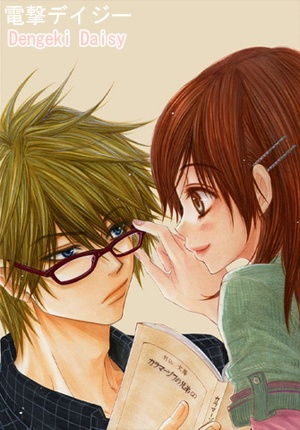

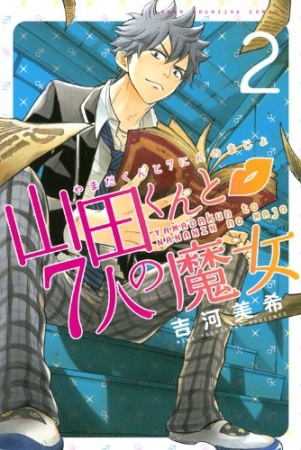


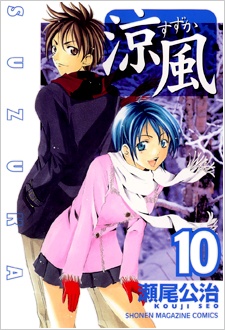

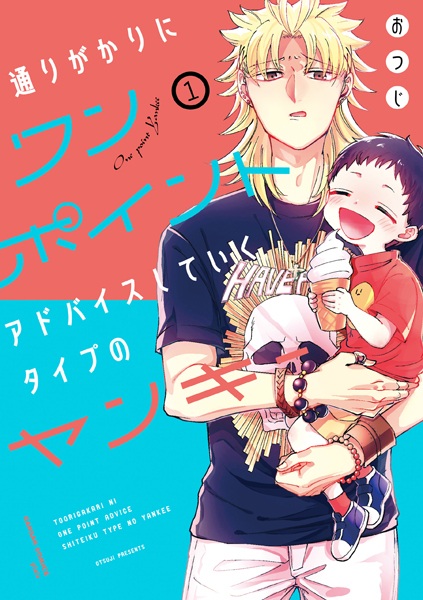







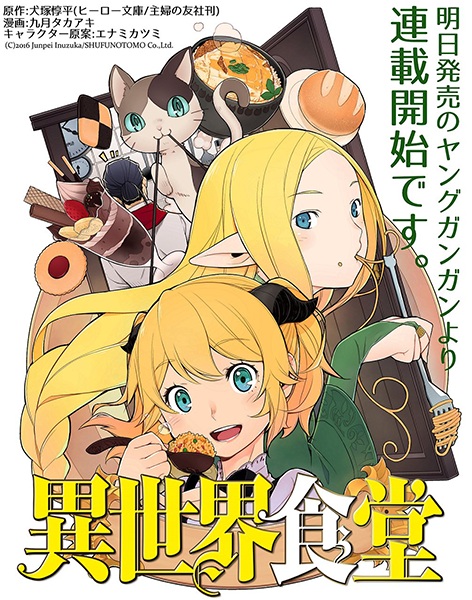
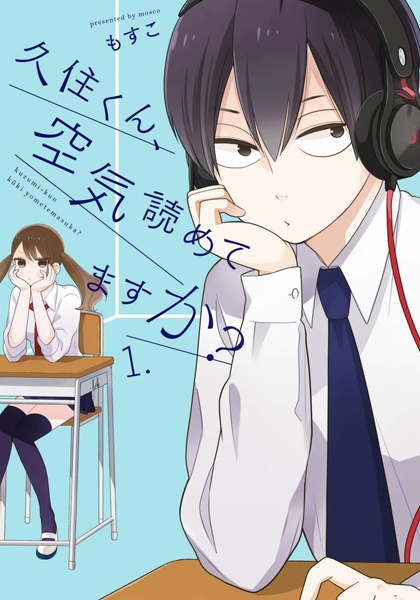
Comments
Post a Comment